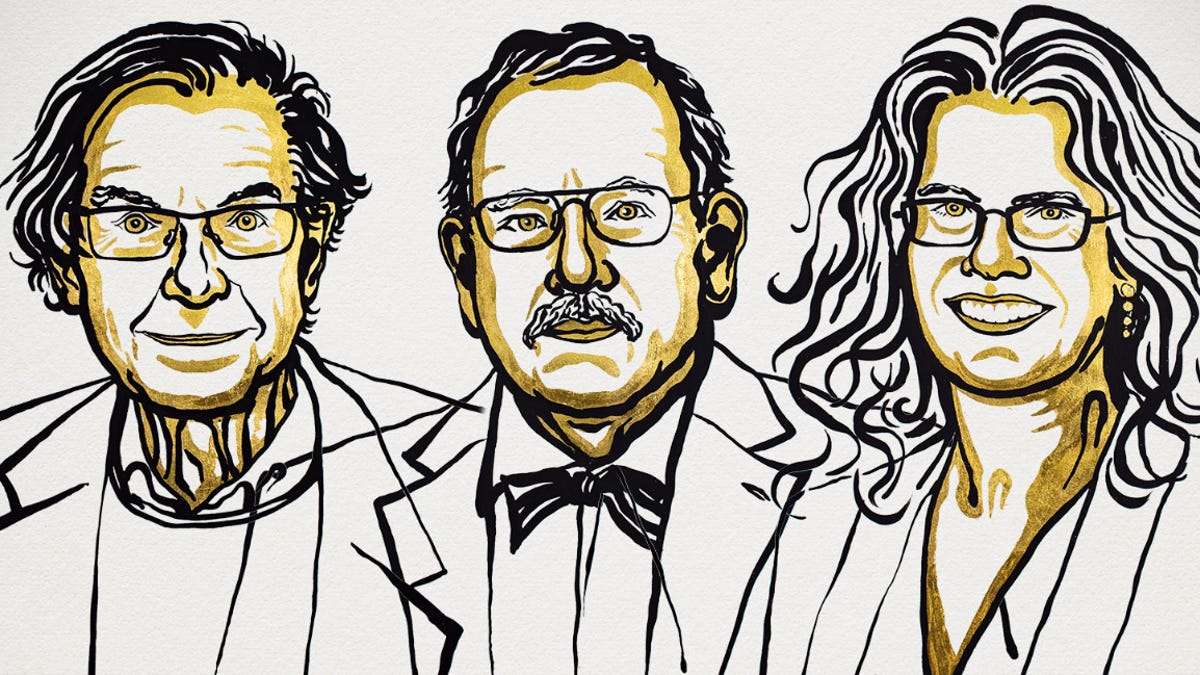2020 Nobel Prize in Physics awarded for major black hole discoveries
Andrea Ghez becomes the fourth woman to win the prize, which she shares with fellow laureates Roger Penrose and Reinhard Genzel.

Roger Penrose, Reinhard Genzel and Andrea Ghez.
There's perhaps no award more prestigious in the world than the Nobel Prize, and this year's award for physics has been split between three scientists right at the top of their field. Two discoveries about the mysteries of our universe -- both relating to black holes -- were deemed so important that we now have three new laureates to celebrate, one of whom has become the fourth ever woman to win the prize.
The laureates were chosen by the Royal Swedish Academy of Sciences, and their names were announced during a ceremony on Tuesday. Roger Penrose from the University of Oxford was awarded the prize for showing that Einstein's theory of relativity leads directly to the formation of black holes, which is somewhat ironic given that Einstein himself wasn't convinced that black holes actually exist.
Penrose has an illustrious career in the field of black hole discoveries -- in 1965, just 10 years after Einstein's death, he proved the existence of black holes and described them in detail in a seminal paper: "Gravitational Collapse and space-time singularities." He later won the Wolf Prize for Physics for his work with Stephen Hawking.
Penrose shares this year's Nobel Prize with Reinhard Genzel, who works both at the Max Planck Institute and at the University of California, Berkeley, and Andrea Ghez from UCLA, who together discovered that an invisible and extremely heavy object governs the orbits of stars at the center of the Milky Way. What could that object be? The only known current explanation is a supermassive black hole.
Ghez joins Marie Curie, who in 1903 was the first woman to ever win a Nobel Prize, on a very short list of women to have been awarded the physics prize. "I hope I can inspire other young women into the field," she said at a press conference on Tuesday. "It's a field that has so many pleasures, and if you are passionate about the science, there's so much that can be done."
Together Genzel and Ghez used the world's largest telescopes to see through the huge clouds of interstellar gas and dust to the center of the Milky Way. The result of their pioneering work, which has been ongoing since the early 1990s, is the most compelling evidence yet that a black hole lies at the center of our universe.
"The discoveries of this year's Laureates have broken new ground in the study of compact and supermassive objects," said David Haviland, chair of the Nobel Committee for Physics. "But these exotic objects still pose many questions that beg for answers and motivate future research. Not only questions about their inner structure, but also questions about how to test our theory of gravity under the extreme conditions in the immediate vicinity of a black hole."

